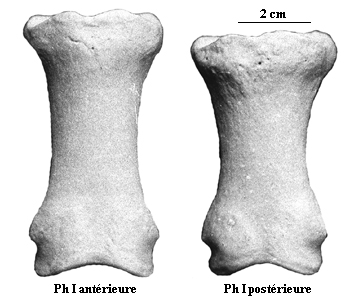Véra Eisenmann
Les amateurs de Chevaux, curieux de leur évolution, trouveront ici quelques articles publiés à leur intention dans la rubrique « Diffusion des connaissances ».
Toutefois la majeure partie du site, toujours en construction, est destinée à des spécialistes et fournit des informations (sytème de mesures, mesures, illustrations, photographies, commentaires, bibliographie) concernant l’ostéologie des Equidés. Pour le moment, c’est surtout les Equidés actuels et quelques Equus fossiles (Equus, Allohippus, Plesippus) qui sont documentés.
En ce qui concerne les Hipparions au sens large, mes données sur les formes d’Amérique du Nord (Merychippus, Cormohipparion, etc.) sont disponibles (en anglais) ainsi que celles sur certains Hipparions de l’ex-Union Soviétique, de France et de Grèce.
Mode d’emploi.
Les numéros (1, 2, 3, etc.) dans les tableaux font référence à des mesures décrites dans les rubriques « Outils Système de mesures pour les os et les dents d’Equus (et d’Hipparions)». Chaque os est figuré avec les légendes correspondantes, mais il faut cliquer sur les vignettes pour que le dessin apparaisse en taille normale.
La rubrique « Outils » contient aussi des explications pratiques concernant des méthodes d’étude (diagrammes de Simpson, estimations de hauteurs au garrot, différenciation des premières phalanges antérieures et postérieures, etc.).
WELCOME.
Most of this site is, and will be, devoted to equids from Merychippus to extant Equus. The information (metric data, photographs, bibliographic references) is given in order to help research specialists or students with their work. Some publications (in « Diffusion des Connaissances ») are intended for a broader public.
The main linguage of this site is French but many articles were translated in English (in particular those in « Tools » concerning methods of measurements).
Instructions for use.
Numbers (1, 2, 3, etc.) inside the tables refer to measurements described in « Tools - System of measurements for Equus (or Hipparion) bones and teeth » where corresponding illustrations and captions may be found for each bone (you have to click on the reductions to make them appear full-size).
The rubric « Tools » contains also practical explanations of techniques such as Simpson’s ratio diagrams, or « recipes » for calculating the withers height or for differenciating anterior and posterior phalanges.
